



Table of Contents
- Introduction
- Understanding Indoor Air Quality
- Benefits of Air Purifying Plants
- Top Air Purifying Plants - 1. Peace Lily
- Snake Plant (Sansevieria)
- Spider Plant (Chlorophytum comosum)
- ZZ Plant (Zamioculcas zamiifolia)
- Rubber Plant (Ficus elastica)
- Aloe Vera
- Boston Fern (Nephrolepis exaltata)
- Devil's Ivy (Epipremnum aureum)
- Money Plant
- English Ivy (Hedera helix)
- Philodendron (Philodendron oxycardium)
- Dracaena (Dracaena spp.)
- Bamboo Palm (Chamaedorea seifrizii)
- Areca Palm (Dypsis lutescens)
- Chrysanthemum (Chrysanthemum morifolium)
- Barberton Daisy (Gerbera jamesonii)
- Monstera Deliciosa
- Faq's
Introduction
Air-purifying plants are an excellent way to enhance indoor air quality while adding beauty and life to your living spaces. These plants not only improve the aesthetics of your home but also contribute to a healthier environment by filtering out harmful pollutants. This article delves into the various air-purifying plants, their benefits, care requirements, and how they can transform your indoor atmosphere.
Understanding Indoor Air Quality
Indoor air quality (IAQ) is a crucial aspect of overall health and well-being. Many people spend a significant amount of time indoors, where air can be more polluted than outdoor air due to various factors such as:
Volatile Organic Compounds (VOCs): Emitted from paints, cleaning products, and furniture.
Carbon Dioxide (CO2): Accumulated from breathing and combustion processes.
Formaldehyde: Found in many household products and materials.
Dust and Allergens: Common in homes, especially those with pets.
Poor indoor air quality can lead to various health issues, including respiratory problems, allergies, and even long-term diseases. Air-purifying plants can help mitigate these issues by absorbing toxins and releasing oxygen, effectively acting as natural air filters.
Benefits of Air Purifying Plants
Improved Air Quality: Plants absorb harmful pollutants and release oxygen, enhancing the air quality in your home.
Increased Humidity: Through a process called transpiration, plants release moisture into the air, which can help alleviate dry skin and respiratory issues.
Stress Reduction: Studies have shown that indoor plants can reduce stress levels, improve mood, and enhance productivity.
Aesthetic Appeal: Air purifying plants add beauty and a touch of nature to any space, making it more inviting and pleasant.
Enhanced Focus and Creativity: Being around plants has been linked to improved concentration and creativity, making them ideal for workspaces.
Top Air Purifying Plants - 1. Peace Lily
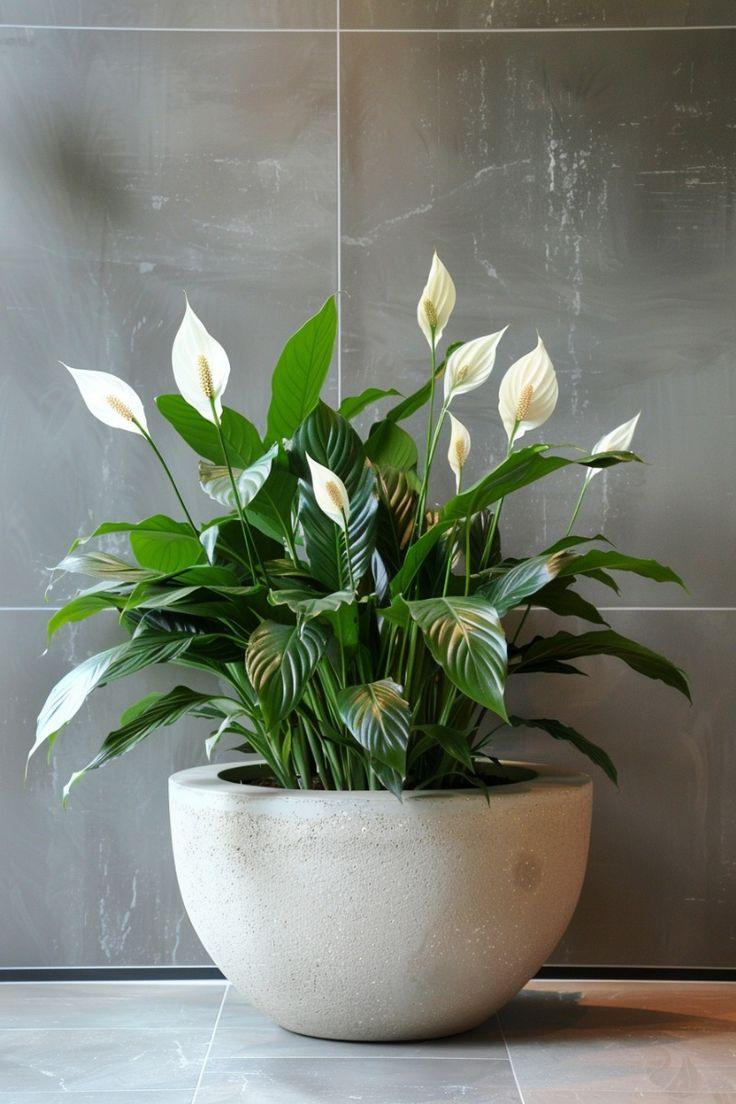 Peace Lily
Peace Lily
Here are some of the most effective air purifying plants that you can incorporate into your indoor spaces:
Peace Lily (Spathiphyllum)
The peace lily is a popular indoor plant known for its air-purifying capabilities and beautiful white flowers. It is highly effective at removing harmful toxins such as formaldehyde, benzene, and trichloroethylene from the air.
Peace lilies prefer indirect sunlight and require regular watering to keep the soil moist but not soggy. They are relatively easy to care for and can thrive in a variety of indoor conditions. When the plant needs water, its leaves will begin to droop, making it easy to identify when it's time to water.
In addition to its air-purifying benefits, the peace lily adds aesthetic value to any space with its elegant white flowers that resemble calla lilies. The flowers bloom in spring and can last for several weeks, providing a touch of natural beauty to your home or office.
Peace lilies are also known for their ability to regulate humidity levels in indoor spaces. Through a process called transpiration, they release moisture into the air, which can help alleviate dry skin and respiratory issues. This makes them particularly beneficial in dry environments like heated or air-conditioned rooms.
Overall, the Peace Lily is an excellent choice for those looking to improve indoor air quality while adding a touch of natural beauty to their living spaces. Its low-maintenance requirements and air-purifying capabilities make it a popular choice among indoor plant enthusiasts.
Snake Plant (Sansevieria)
 Snake Plant
Snake Plant
The snake plant, also known as mother-in-law's tongue, is a resilient and effective air purifier. It is particularly efficient at filtering out formaldehyde, xylene, and toluene from indoor air.
One of the most appealing aspects of the snake plant is its low-maintenance requirements. It thrives in low light conditions and requires infrequent watering, making it an ideal choice for busy individuals or those new to indoor gardening. Snake plants can tolerate a wide-range of soil types and conditions, allowing them to adapt to various indoor environments.
The snake plant's striking upright leaves are another reason for its popularity. Its unique foliage, often featuring green and yellow variegation, adds visual interest to any space. The leaves can grow quite tall, reaching up to several feet in height, making the snake plant a versatile option for both small and large indoor spaces.
Despite its tough exterior, the snake plant is known for its air-purifying abilities. It absorbs harmful toxins through its leaves and releases oxygen, improving indoor air quality. This makes it an excellent choice for offices, homes, and other indoor environments where air quality may be compromised.
In addition to its air-purifying and low-maintenance qualities, the snake plant is also known for its ability to adapt to various lighting conditions. While it prefers bright, indirect light, it can tolerate lower light levels as well. This flexibility allows gardeners to place the snake plant in a variety of locations throughout their homes or offices.
Spider Plant (Chlorophytum comosum)
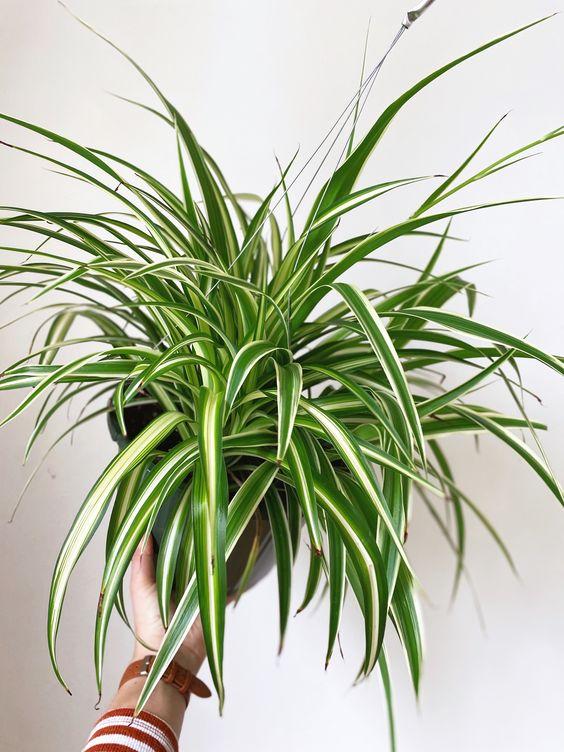 Spider Plant
Spider Plant
The spider plant is a fast-growing, easy-to-care-for houseplant that is highly effective at removing carbon monoxide, formaldehyde, and xylene from indoor air. Its long, arching leaves and ability to produce "baby" plants, known as plantlets, make it a popular choice among indoor gardeners.
Spider plants prefer bright, indirect sunlight and should be watered when the top inch of soil is dry. They are relatively forgiving when it comes to watering, making them suitable for those who may forget to water their plants regularly. Spider plants can tolerate a range of soil types and conditions, allowing them to adapt to various indoor environments.
One of the most unique features of the spider plant is its ability to produce plantlets, which hang from the mother plant like spiders on a web. These plantlets can be easily propagated and shared with friends or used to create new plants, making the spider plant a great choice for those who enjoy propagating and growing their own plants.
In addition to its air-purifying and propagation abilities, the spider plant is also known for its ability to adapt to various lighting conditions. While it prefers bright, indirect light, it can tolerate lower light levels as well. This flexibility allows gardeners to place the spider plant in a variety of locations throughout their homes or offices.
Overall, the spider plant is an excellent choice for those looking to improve indoor air quality while adding a touch of greenery to their living spaces. Its low-maintenance requirements, air-purifying capabilities, and unique propagation abilities make it a popular choice among indoor plant enthusiasts.
ZZ Plant (Zamioculcas zamiifolia)
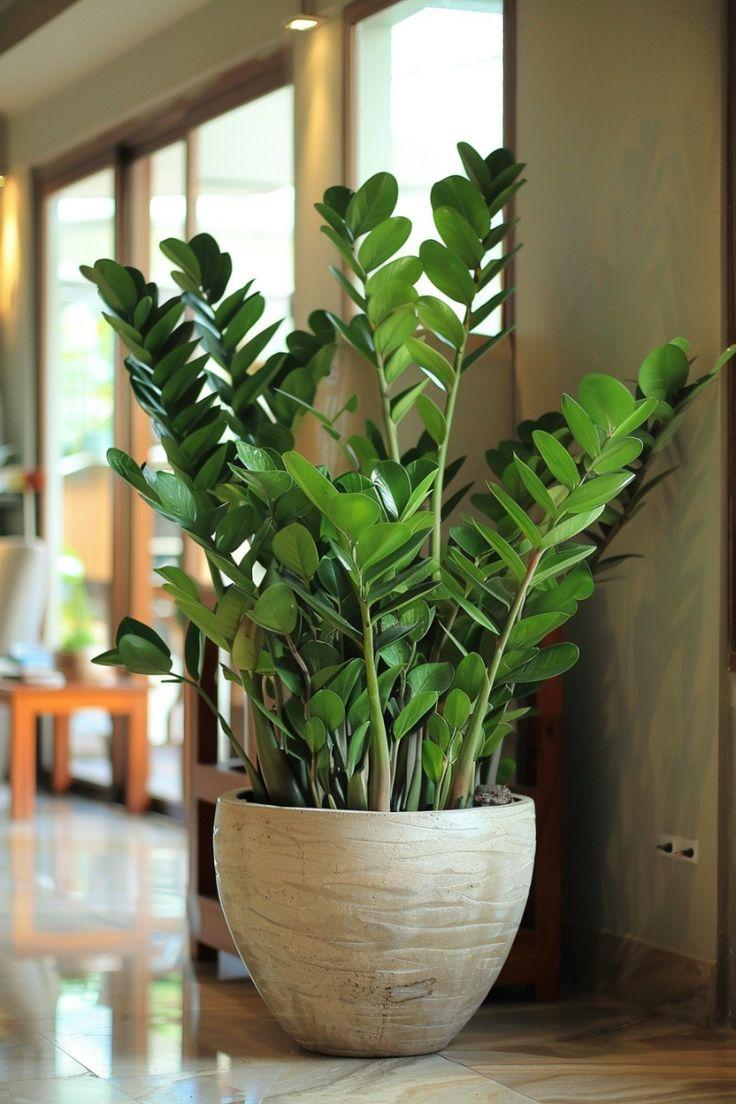 ZZ plant, Pinterest
ZZ plant, Pinterest
The ZZ plant, also known as the Zanzibar gem, is a hardy and low-maintenance houseplant that is effective at absorbing xylene, toluene, and benzene from indoor air. Its glossy, waxy leaves and ability to thrive in low light conditions make it a popular choice among indoor gardeners.
ZZ plants are very forgiving when it comes to care. They can tolerate a wide range of soil types and conditions, and require minimal watering. This makes them an ideal choice for those who may forget to water their plants regularly or have limited time to devote to plant care.
Despite its tough exterior, the ZZ plant is known for its air-purifying abilities. It absorbs harmful toxins through its leaves and releases oxygen, improving indoor air quality. This makes it an excellent choice for offices, homes, and other indoor environments where air quality may be compromised.
In addition to its air-purifying and low-maintenance qualities, the ZZ plant is also known for its unique appearance. Its glossy, waxy leaves add a modern touch to any room, and its compact growth habit makes it suitable for a variety of indoor spaces.
Overall, the ZZ plant is an excellent choice for those looking to improve indoor air quality while adding a touch of greenery to their living spaces. Its low-maintenance requirements, air-purifying capabilities, and unique appearance make it a popular choice among indoor plant enthusiasts.
Rubber Plant (Ficus elastica)
 Rubber Plant, Pinterest
Rubber Plant, Pinterest
The rubber plant, also known as the rubber tree, is a large, striking houseplant that is great for removing formaldehyde and improving overall air quality. Its large, glossy leaves and ability to grow quite tall make it a focal point in any room.
Rubber plants prefer bright, indirect light and should be watered when the top inch of soil is dry. They are relatively easy to care for, but may require more attention than some other air-purifying plants. Rubber plants can tolerate a range of soil types and conditions, allowing them to adapt to various indoor environments.
One of the most appealing aspects of the rubber plant is its ability to grow quite tall, reaching up to several feet in height. This makes it a great choice for those looking to add a statement piece to their living spaces. The rubber plant's large, glossy leaves also add a touch of elegance to any room.
In addition to its air-purifying and aesthetic qualities, the rubber plant is also known for its ability to adapt to various lighting conditions. While it prefers bright, indirect light, it can tolerate lower light levels as well. This flexibility allows gardeners to place the rubber plant in a variety of locations throughout their homes or offices.
Overall, the rubber plant is an excellent choice for those looking to improve indoor air quality while adding a touch of drama to their living spaces. Its air-purifying capabilities, striking appearance, and adaptability make it a popular choice among indoor plant enthusiasts.
Aloe Vera
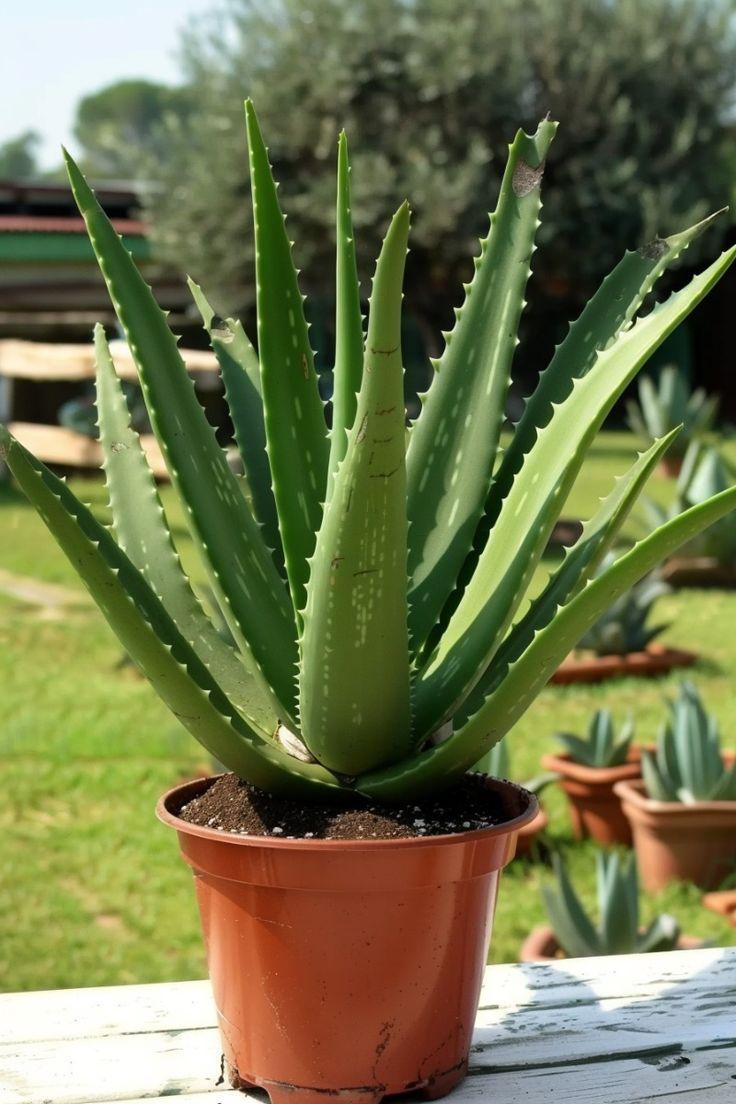 Aloe Vera, Pinterest
Aloe Vera, Pinterest
Aloe vera is a succulent plant that is known for its air-purifying capabilities and healing properties. It is particularly effective at removing formaldehyde and benzene from indoor air.
Aloe vera requires bright, indirect sunlight and infrequent watering. It is a relatively easy plant to care for, making it suitable for those who may have limited time to devote to plant care. Aloe vera can tolerate a range of soil types and conditions, allowing it to adapt to various indoor environments.
One of the most unique features of aloe vera is the gel inside its leaves, which has been used for centuries to treat burns, cuts, and other skin irritations. This makes aloe vera a great choice for those looking to incorporate natural remedies into their lives.
In addition to its air-purifying and healing properties, aloe vera is also known for its ability to adapt to various lighting conditions. While it prefers bright, indirect light, it can tolerate lower light levels as well. This flexibility allows gardeners to place aloe vera in a variety of locations throughout their homes or offices.
Overall, aloe vera is an excellent choice for those looking to improve indoor air quality while incorporating natural remedies into their lives. Its air-purifying capabilities, healing properties, and adaptability make it a popular choice among indoor plant enthusiasts.
Boston Fern (Nephrolepis exaltata)
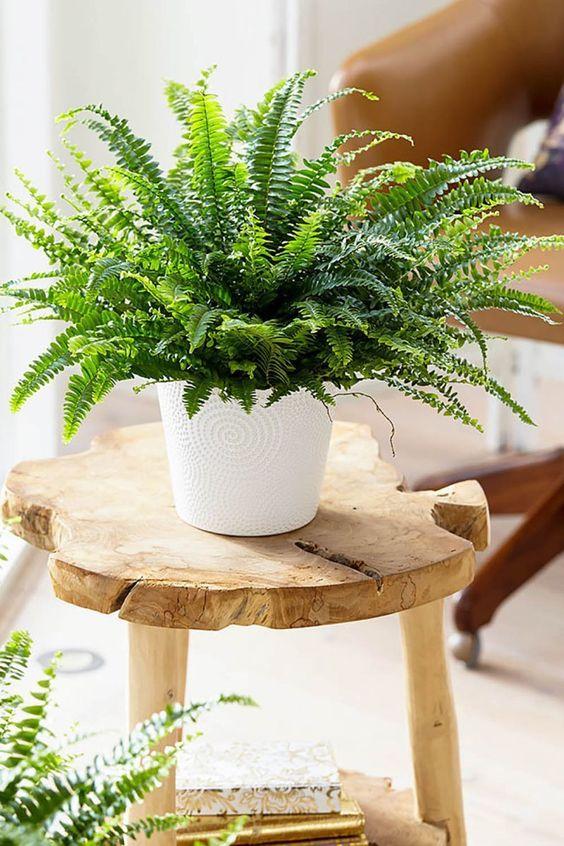 Boston Fern, Pinterest
Boston Fern, Pinterest
The Boston fern is a lush, tropical-looking houseplant that is effective at removing formaldehyde and other pollutants from indoor air. Its delicate, feathery fronds and ability to add a touch of greenery to any space make it a popular choice among indoor gardeners.
Boston ferns prefer high humidity and indirect light, and require consistent moisture. They are relatively high-maintenance compared to some other air-purifying plants, requiring regular watering and misting to keep their fronds healthy. Boston ferns can tolerate a range of soil types and conditions, but prefer well-draining soil.
One of the most appealing aspects of the Boston fern is its ability to add a touch of the tropics to any indoor space. Its delicate, feathery fronds create a lush, jungle-like atmosphere that can help to create a calming and relaxing environment.
In addition to its air-purifying and aesthetic qualities, the Boston fern is also known for its ability to adapt to various lighting conditions. While it prefers bright, indirect light, it can tolerate lower light levels as well. This flexibility allows gardeners to place the Boston fern in a variety of locations throughout their homes or offices.
Overall, the Boston fern is an excellent choice for those looking to improve indoor air quality while adding a touch of tropical beauty to their living spaces. Its air-purifying capabilities, lush appearance, and adaptability make it a popular choice among indoor plant enthusiasts.
Devil's Ivy (Epipremnum aureum)
 Devil's Ivy, Pinterest
Devil's Ivy, Pinterest
The pothos, also known as the devil's ivy, is a fast-growing, trailing houseplant that is excellent at filtering out formaldehyde, benzene, and xylene from indoor air. Its long, vining stems and ability to thrive in a variety of lighting conditions make it a popular choice among indoor gardeners.
Pothos plants prefer bright, indirect light and should be watered when the soil is dry. They are relatively easy to care for and can tolerate a range of soil types and conditions. Pothos plants are also known for their ability to adapt to various lighting conditions, making them suitable for a variety of indoor spaces.
One of the most appealing aspects of the pothos is its trailing habit. Its long, vining stems can be trained to climb up a trellis or allowed to trail down from a hanging basket or shelf. This makes pothos plants a great choice for adding a touch of greenery to any space, whether it's a small office or a large living room.
In addition to its air-purifying and aesthetic qualities, the pothos is also known for its ability to grow quickly. With proper care, a pothos plant can grow several feet long in a relatively short period of time. This makes it a great choice for those looking to add a touch of greenery to their living spaces quickly.
Overall, the pothos is an excellent choice for those looking to improve indoor air quality while adding a touch of greenery to their living spaces. Its air-purifying capabilities, trailing habit, and adaptability make it a popular choice among indoor plant enthusiasts.
Money Plant
 Money Plant
Money Plant
The Money Plant, commonly known as Pothos (Epipremnum aureum), is a versatile and resilient houseplant celebrated for its air-purifying properties. This plant is particularly effective at removing harmful toxins from the air, including formaldehyde, benzene, and xylene. Its ability to thrive in a variety of conditions makes it a favorite among both novice and experienced plant enthusiasts.
Pothos is known for its low-maintenance nature. It prefers bright, indirect light but can adapt to low-light conditions, making it suitable for various indoor environments. Watering should be done when the top inch of soil feels dry, typically every 1-2 weeks. Overwatering should be avoided, as it can lead to root rot. Pothos can grow in a range of soil types, but well-draining potting mix is ideal.
Beyond its air-purifying capabilities, the Money Plant is also known for its ability to reduce dust particles in the air, which can help alleviate skin and eye irritation. Its trailing vines can grow several feet long, making it perfect for hanging baskets or as a decorative tabletop plant. The plant's heart-shaped leaves, often variegated with shades of green and yellow, add a touch of natural beauty to any space. Additionally, Pothos is easy to propagate; simply cut a stem with a few leaves and place it in water or soil to grow a new plant. This makes it a great choice for sharing with friends or expanding your indoor garden.
English Ivy (Hedera helix)
 English Ivy, Pinterest
English Ivy, Pinterest
English Ivy (Hedera helix) is a classic climbing plant known for its air-purifying properties and versatility as an indoor plant. It is particularly effective at absorbing volatile organic compounds (VOCs) such as formaldehyde, xylene, and benzene. Additionally, English Ivy has been shown to reduce airborne fecal particles, making it a great choice for bathrooms and other damp areas.
English Ivy thrives in bright, indirect light but can tolerate partial shade. It prefers consistently moist soil, so regular watering is essential, especially during the growing season. Misting the leaves can help maintain humidity, which is beneficial for this plant. English Ivy can be grown in pots or as a climbing vine on trellises, making it a versatile addition to any indoor space.
In addition to its air-purifying capabilities, English Ivy is known for its ability to combat mold levels in the home. This makes it an excellent choice for improving air quality in damp areas. Its attractive, lobed leaves add a touch of greenery and elegance to any room. English Ivy is also easy to propagate; cuttings can be placed in water until roots develop, allowing you to create new plants. With its climbing nature and lush foliage, English Ivy can create a beautiful, natural aesthetic in your home.
Philodendron (Philodendron oxycardium)
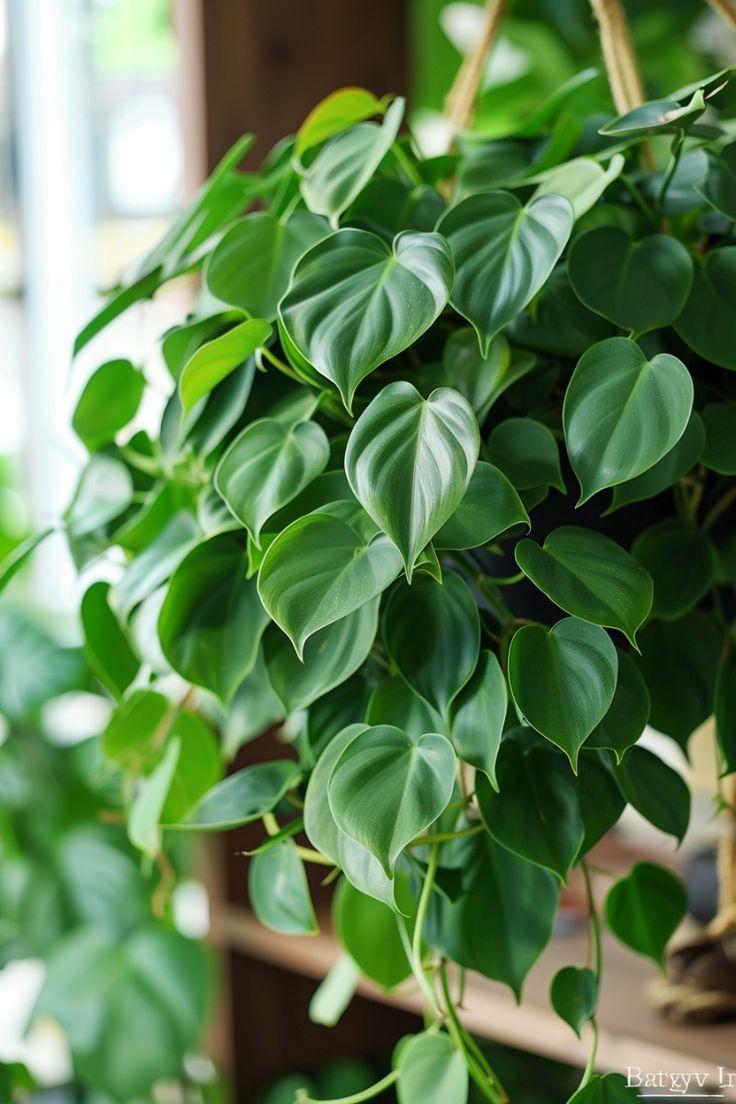
The Heart Leaf Philodendron (Philodendron oxycardium) is a popular houseplant known for its air-purifying abilities and attractive foliage. This plant is particularly effective at removing formaldehyde from indoor air, making it a valuable addition to your home or office.
Philodendrons prefer bright, indirect light but can tolerate lower light conditions. They thrive in well-draining potting soil and should be watered when the top inch of soil is dry. Overwatering can lead to root rot, so it's essential to ensure proper drainage. Philodendrons are relatively forgiving and can adapt to various indoor environments, making them suitable for beginners.
The Heart Leaf Philodendron's heart-shaped leaves and trailing vines add a touch of elegance to any space. This plant is also known for its fast growth, making it a popular choice for those looking to quickly enhance their indoor greenery. Philodendrons are easy to propagate; simply cut a stem with a few leaves and place it in water or soil to grow a new plant. Additionally, they are known to help reduce stress and improve mood, making them a perfect companion for home or office settings.
Dracaena (Dracaena spp.)

Dracaena is a diverse genus of houseplants that are well-regarded for their air-purifying capabilities. Various species, including Dracaena marginata and Dracaena fragrans, are effective at filtering out formaldehyde, benzene, and trichloroethylene from indoor air.
Dracaena plants prefer bright, indirect light but can adapt to lower light conditions. They should be watered when the top inch of soil is dry, as they are sensitive to overwatering. Dracaena can thrive in a variety of soil types, but a well-draining potting mix is ideal. Regularly checking for pests and wiping the leaves can help maintain their health and appearance.
With their striking foliage and variety of colors and shapes, Dracaena plants can serve as beautiful decorative pieces in any room. Their tall, architectural form makes them excellent focal points in living rooms, offices, or entryways. Additionally, Dracaena plants are known to be relatively low-maintenance, making them suitable for busy individuals or those new to indoor gardening. They also contribute to a calming environment, enhancing the overall atmosphere of your indoor space.
Bamboo Palm (Chamaedorea seifrizii)

The Bamboo Palm is a popular indoor plant known for its air-purifying abilities and tropical appearance. It is effective at filtering out formaldehyde, benzene, and trichloroethylene, making it a great choice for improving indoor air quality.
Bamboo Palms thrive in bright, indirect light and prefer consistently moist soil. Regular watering is essential, especially during the growing season, but be careful not to overwater. This palm also benefits from regular misting to maintain humidity levels, which is particularly important in dry indoor environments.
In addition to its air-purifying qualities, the Bamboo Palm adds a tropical feel to any space. Its feathery fronds create a lush, inviting atmosphere that can help reduce stress and promote relaxation. This plant is also known for its ability to act as a natural humidifier, making it ideal for homes with heating or air conditioning. With its elegant appearance and air-cleaning capabilities, the Bamboo Palm is an excellent choice for living rooms, offices, or any indoor space in need of a touch of greenery.
Areca Palm (Dypsis lutescens)
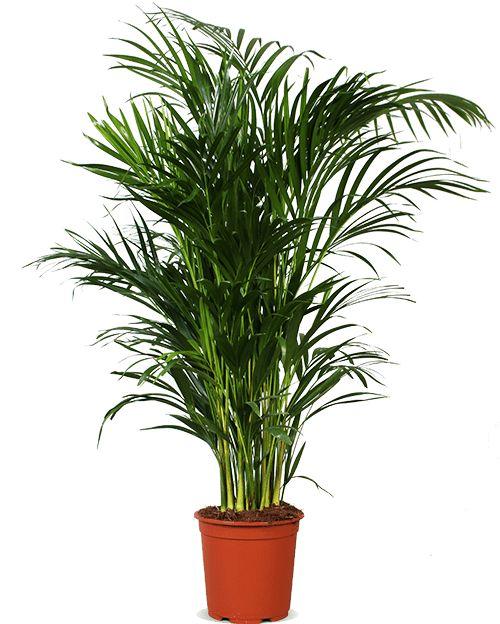
The Areca Palm is a beautiful indoor plant renowned for its air-purifying abilities. It is effective at removing toxins such as formaldehyde, toluene, and xylene from the air, making it a valuable addition to any home or office.
Areca Palms prefer bright, indirect light and should be watered regularly to keep the soil moist but not soggy. They thrive in humid conditions, so regular misting can be beneficial, especially in dry indoor environments. This palm can adapt to a range of soil types, but a well-draining potting mix is ideal.
The Areca Palm is not only known for its air-purifying qualities but also for its aesthetic appeal. Its feathery fronds create a tropical ambiance, making it a popular choice for living rooms, offices, and other indoor spaces. Additionally, the Areca Palm can help increase humidity levels, which can be beneficial for both the plant and the occupants of the space. With its graceful appearance and air-cleaning capabilities, the Areca Palm is an excellent choice for anyone looking to enhance their indoor environment.
Chrysanthemum (Chrysanthemum morifolium)

Chrysanthemums, commonly known as mums, are vibrant flowering plants that are not only beautiful but also effective air purifiers. They are particularly good at filtering out toxins such as ammonia, benzene, and formaldehyde, which are often found in household products.
Chrysanthemums thrive in bright sunlight and require regular watering to keep the soil moist. They prefer well-draining soil and benefit from fertilization during their growing season. Deadheading spent blooms can encourage more flowers and prolong the blooming period.
In addition to their air-purifying capabilities, chrysanthemums add vibrant colors to your home with their beautiful blooms, making them a cheerful addition to any room. They are also known for their ability to improve overall indoor air quality, making them a double benefit for any household. Chrysanthemums can be grown in pots or garden beds, and their flowers can last for several weeks, providing a burst of color and freshness to your indoor space.
Barberton Daisy (Gerbera jamesonii)
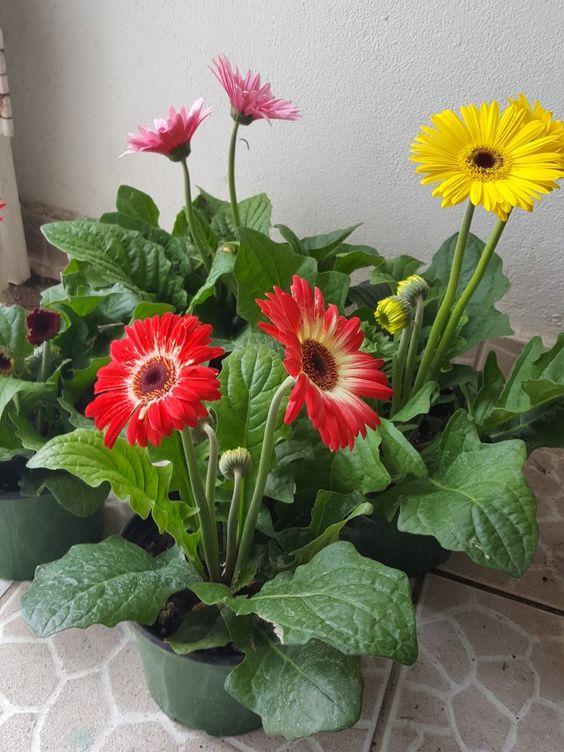
The Barberton Daisy, also known as Gerbera Daisy, is a stunning flowering plant that is effective at removing formaldehyde, trichloroethylene, and benzene from indoor air. Its bright, colorful blooms make it a favorite among indoor gardeners.
Barberton Daisies thrive in bright, indirect sunlight and should be watered regularly, ensuring that the soil remains moist but not waterlogged. They prefer well-draining soil and benefit from regular fertilisation during their growing season.
This plant produces bright, colorful flowers that can brighten up any space, making it both an air purifier and a decorative element. The Gerbera Daisy is also known for its ability to improve mood and reduce stress, making it a perfect companion for home or office settings. With its vibrant colors and air-purifying capabilities, the Barberton Daisy is an excellent choice for anyone looking to enhance their indoor environment.
Monstera Deliciosa
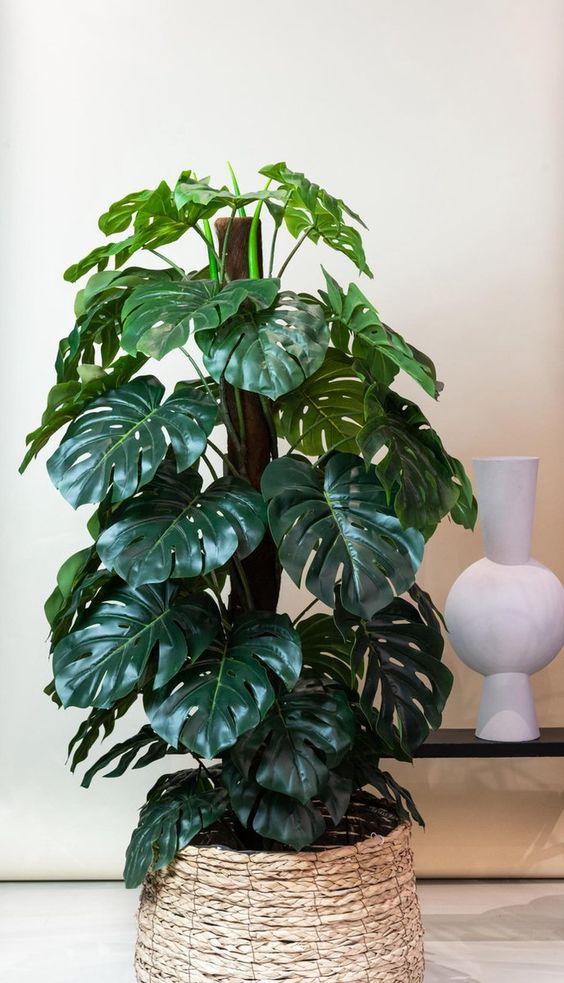
Monstera Deliciosa, commonly known as the Swiss Cheese Plant, is a popular houseplant known for its unique, large leaves that feature distinctive holes and splits. This plant is effective at removing formaldehyde and other toxins from indoor air, making it a valuable addition to your home.
Monstera prefers bright, indirect light but can tolerate lower light levels. It should be watered when the top inch of soil is dry, typically every 1-2 weeks. This plant thrives in well-draining potting soil and benefits from regular fertilization during the growing season.
Known for its large, unique leaves, the Monstera adds a bold statement to any room and is a favorite among interior designers. Its tropical appearance can create a lush, inviting atmosphere in your home. Additionally, Monstera plants are relatively easy to care for and can grow quite large, making them suitable for both small and large spaces. With its air-purifying capabilities and striking foliage, Monstera Deliciosa is an excellent choice for anyone looking to enhance their indoor environment. These ten plants not only improve air quality but also add beauty and vibrancy to your indoor spaces, making them excellent choices for any home or office.
explore further
Latest from Contemporary ideas
More from Innovations
Resources
Dwello, for every home buyer, is a way to go from 'I feel' to 'I know', at no extra cost.




